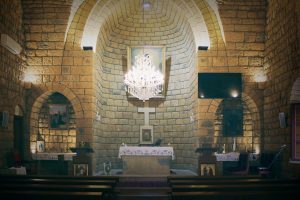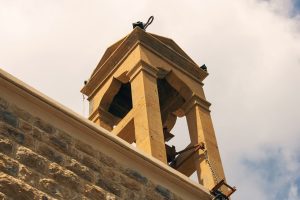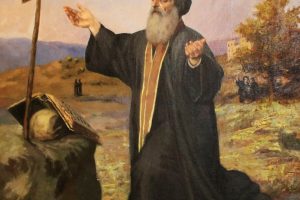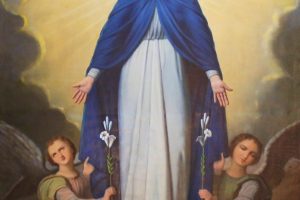Overview
Map
Other Details
كنيسة سيّدة النجاة القصيبة
1883
Qsaibeh Baabda
Baabda
Mount Lebanon
دُشّنت كنيسة سيّدة النجاة-القصيبة في عيد السيّدة سنة ١٨٨٣ بسعي وهمّة الخوري بطرس زيدان. تحتوي هذه الكنيسة على ثلاثة رسومات قيّمة لشفيعة الرعيّة (رسم داود القرم، ١٨٩٤) عليها كتابة: "من وجدني وجد الحياة ونال مرضاة الربّ" (أمثال ٨ /٣٥)، ومار مارون (رسم حبيب سرور، ١٩٢٣)، ومار بطرس(رسم جرجس عبدالله أبو جودة، ١٩١١).من الملفت وجود عين العناية الإلهية على بيت القربان، رمزًا قّل استخدامه بعد منتصف القرن التاسع عشر في الفن المسيحي بعدما أخذ دلالةً ماسونيّةً.رُمّمت الكنيسة في القرن الماضي وأُعيد تدشينها وتكريس المذبح الجديد في عيد السيّدة سنة ١٩٧٤.Our Lady of Deliverance Church QsaybehThe church was consecrated on the feast of Assumption of Mary year 1883 with the efforts of Father Boutros Zeidan. Three main paintings are hung in the three apses. On the main apse, stands that of the Assumption of the Lady, painted by Dawoud El Qorm in year 1894, with the verse :"For whoever finds me finds life, and wins favor from the Lord" (Proverbs 8: 35) written below the virgin. On the side apses, one can find a painting that depicts Saint Maroun drawn by Habib Srour in 1923, and another one depicting Saint Peter, a work by Gerges Abdallah Abou Jaoudeh, year 1911.What is remarkable is the presence of the Eye of Providence on the tabernacle, a symbol that was rarely used after the mid 19th century in Christian art for its relation with the Masonry.The Church was renovated in the past century, and the Altar was reconsecrated on the feast of the Assumption of the Lady year 1974.
Visited 2683 times, 2 Visits today


















Reviews are disabled, but trackbacks and pingbacks are open.